One day in 1985 – 10 years after a plan was hatched to help an iconic bird soar in the UK once more – a small, scrawny, bedraggled thing heaved out of an egg and collapsed with exhaustion in a huge stick nest.
This was a big moment. Twelve weeks later, when that bird took to the air on untrained wings for the first time, it would make history. The first Scottish white-tailed eagle to fledge for 70 years.
Nicknamed the ‘flying barn door’, fully grown white-tailed eagles are gigantic. Seeing them in flight, it seems almost impossible that something so massive could be airborne. But there it is, soaring away: the first nationally extinct species to be successfully reintroduced to our shores in the 20th century.
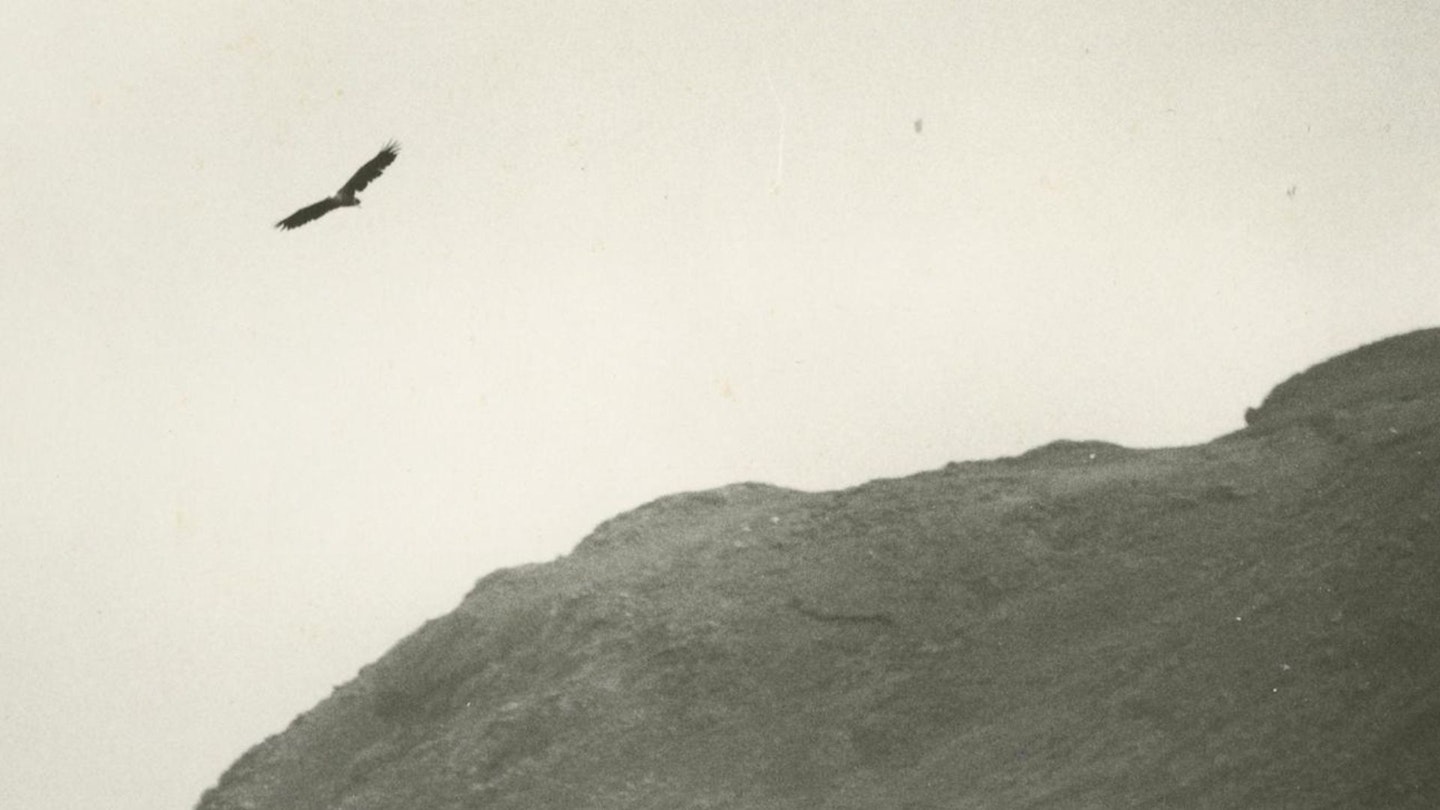
This was a landmark event in the UK, a country with a public that loves wildlife but in which that wildlife is struggling – to put it mildly. Since 1500, c151 species have been made extinct, most from the 18th to the 20th century, but with 13 confirmed since 2019. The UK is haemorrhaging nature, so putting a tick in the ‘plus’ column is pretty big news – and this one has a 2.5m (8ft) wingspan.
Perched, the white-tailed eagle stands up to one metre (3ft) tall, with a chunky, hooked beak and talons curving 1.5in to a needle-sharp point. These are birds of coastlines, sea lochs and estuaries, wandering skies the length and breadth of the country. At one time, they were more common than golden eagles.
But in the 20th century the white-tailed eagle was shot, trapped and poisoned to extinction. Where the birds weren’t killed outright, their eggs were robbed by ‘collectors’ and their prey contaminated by pesticides. The white-tailed eagle, which had been present in Britain since the Ice Age, was gone.
Until that day in 1985, when a young eagle launched itself into the air. Forty years later, there are around 300 but it all started on one small mountainous island.

A fledgling plan hatches
The Isle of Rum juts out of the water like something from a dream. A volcanic outcrop that has cooled over centuries to a blue-grey haze of mountains rising from the gleam of the sea.
It is the largest of the Small Isles, 104 square kilometres of peat and bog, rocky ridgelines and scalloped shores, with a huge abandoned castle and small resident community.
Rum has, over its long history, been home to hunter-gatherers, been farmed for potato and barley, and been used as a hunting ground for the nobility. Now the whole island is a nature reserve.
White-tailed eagles, also known as sea eagles, are big fish fans, with a taste also for seabirds and rabbits. For the small band of conservationists planning their return, choosing a site where there would be enough food was vital. Ideally it would also be fairly remote and welcomed by the local community.
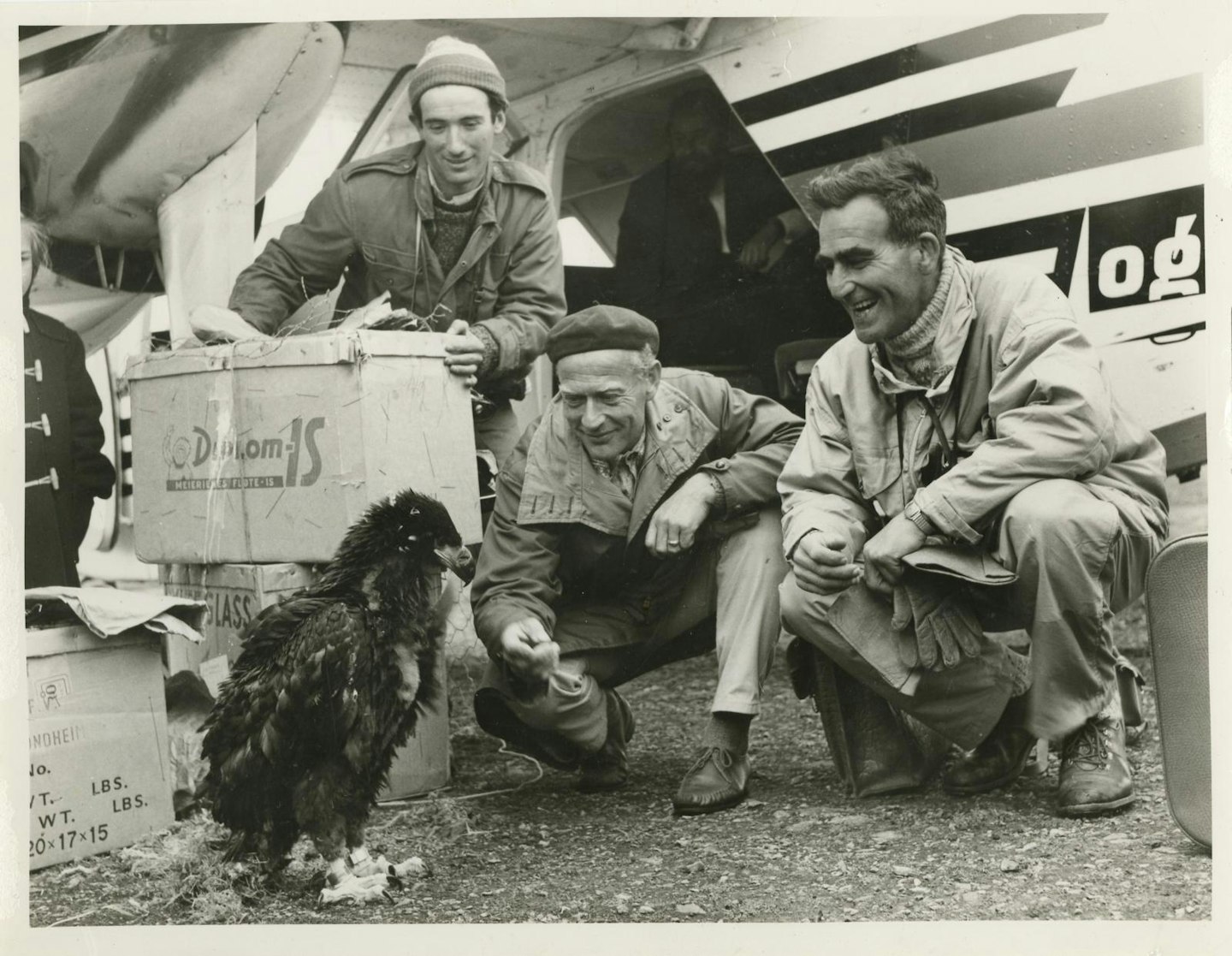
Roy Dennis OBE has something of a heroic status in bird conservation. Where there is a restoration project, there is often his name, sometimes in a supportive but more often a leading role.
Roy has reintroduced the red kite; restored osprey, red squirrel and golden eye duck populations; campaigned for the beaver’s return; and funded studies into a possible return of the lynx. In 2004, the RSPB voted him ‘the person who had done the most for nature conservation in Scotland in the last 100 years.’
“There was a terribly long struggle,” he recalls of the white-tailed eagle project. He had joined as a young man, under the wing of ornithologist George Waterston who led the first two attempts. At the time, this was radical work.
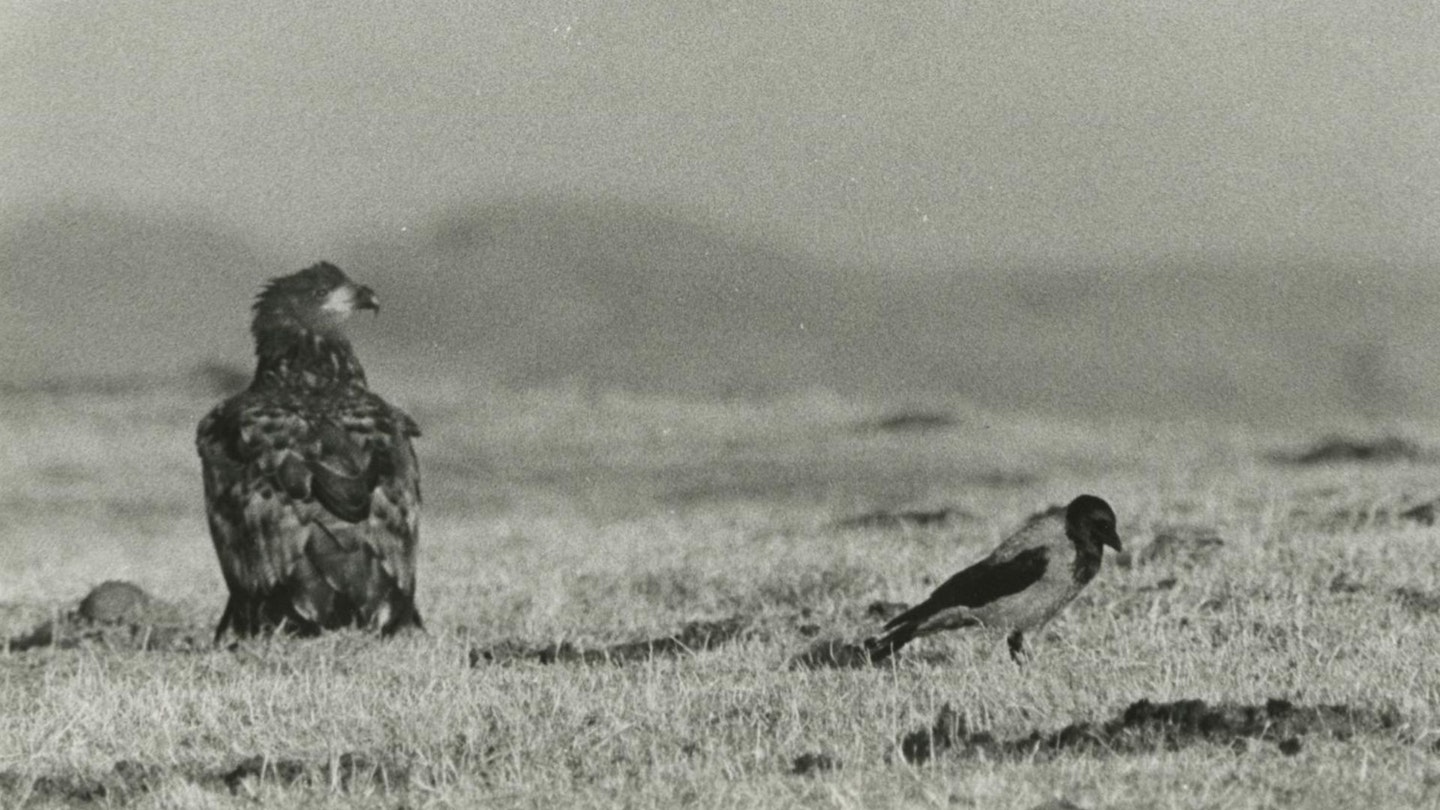
The first attempt was made in Glen Etive, where three birds were released, and the second, with four more birds, on Fair Isle. Of those four, one disappeared; two, Roy suspects, flew back to Norway; and the fourth drowned with its feathers caked in fulmar oil (fulmars are a favourite prey and, as a defense mechanism, their chicks will spit-up stinking and sticky stomach oil).
Neither project was successful in establishing a population but vital information had been learned. “Now we knew how to rear and release them,” says Roy.
How white-tailed eagles made a comeback
Assured that the project was feasible, a small team started looking around for a new place to try again. Rum, an island in the heart of what was once the eagle’s stronghold, with a population of people working for the nature reserve, was to be it.
“They were more than half grown, so they were big, the size of a goose,” Roy recalls. It was 1975 and he and John A. Love, who was now leading the project, had come to Norway. There, they were to collect four young sea eagles, birds that would otherwise have likely been shot or poisoned.
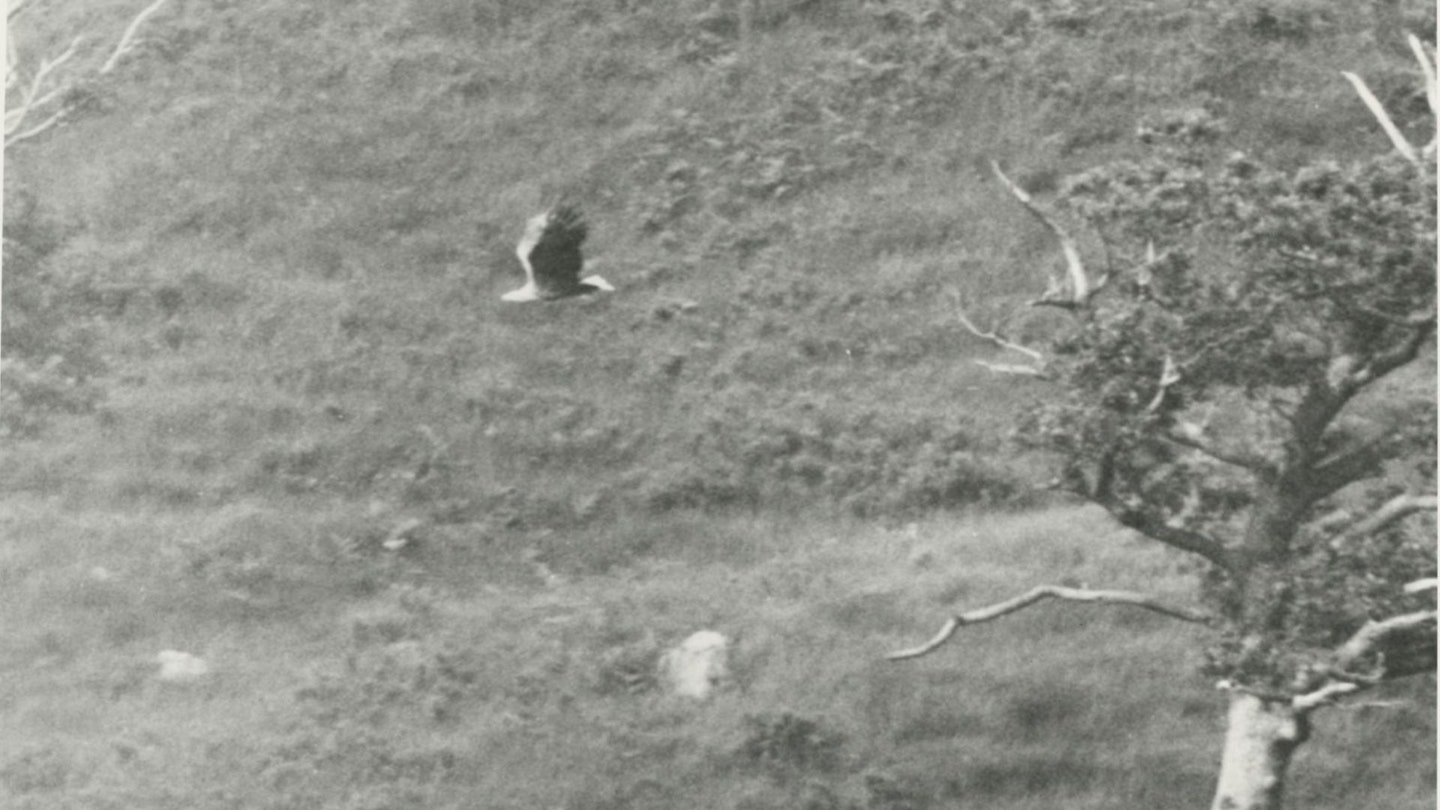
“When you go to the nest, they try to pretend they’re not there. They don’t actively attack you,” says Roy. “So it’s possible to pick them up and put them in a box.” Four eaglets were put into four boxes, each measuring 2x4m, and loaded onto the RAF Nimrod – at the time a top class military aircraft.
“The RAF Kinloss was a major RAF base with a lot of birdwatchers,” explains Roy. “I used to go to give talks at their bird clubs. Part of their job was to check on Russian submarines north of Norway, so they built the eagle transport into their training flights.”
And so the eaglets were carried, on a maritime surveillance aircraft loaded with top-secret equipment, over to Kinloss, driven to Mallaig and then taken by boat to Rum.
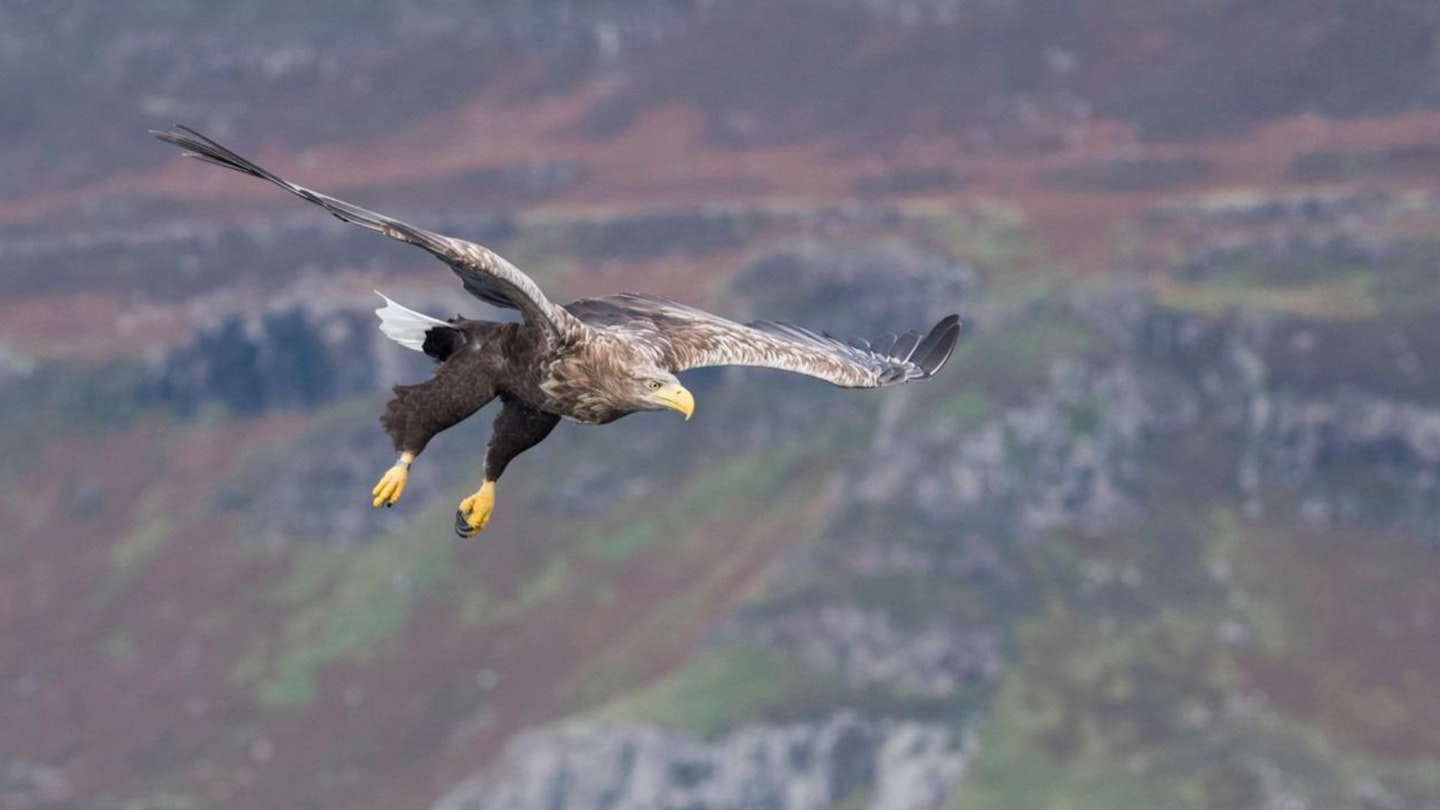
Over the next ten years, 82 eaglets were shipped from Norway to the west coast. It takes five years for a white-tailed eagle to reach breeding age, so it would be a long wait before they would start to see a success.
But in the tenth year, a sea eagle named Blondie drifted over to Mull, tempted by the abundant prey. There, she mated, nested and laid an egg. The bird that hatched from it and flew away was the first Scottish sea eagle in 70 years.
Soaring over Scotland
Now there are estimated to be about 130 breeding pairs of sea eagles in Scotland alone, predominantly along the west coast.
In 2007, more Norwegian birds were released along the east coast and in Ireland, and in 2019 the first six birds to be released in England were taken down from Scotland to the Isle of Wight. Across the UK, there are an estimated 200 pairs of these gigantic raptors. The fourth largest bird of prey in the world.
There has been conflict. White-tailed eagles are opportunistic hunters who, given the chance, will scavenge carrion, steal from other predators, and kill small mammals like rabbits and, on rare occasion, lambs.
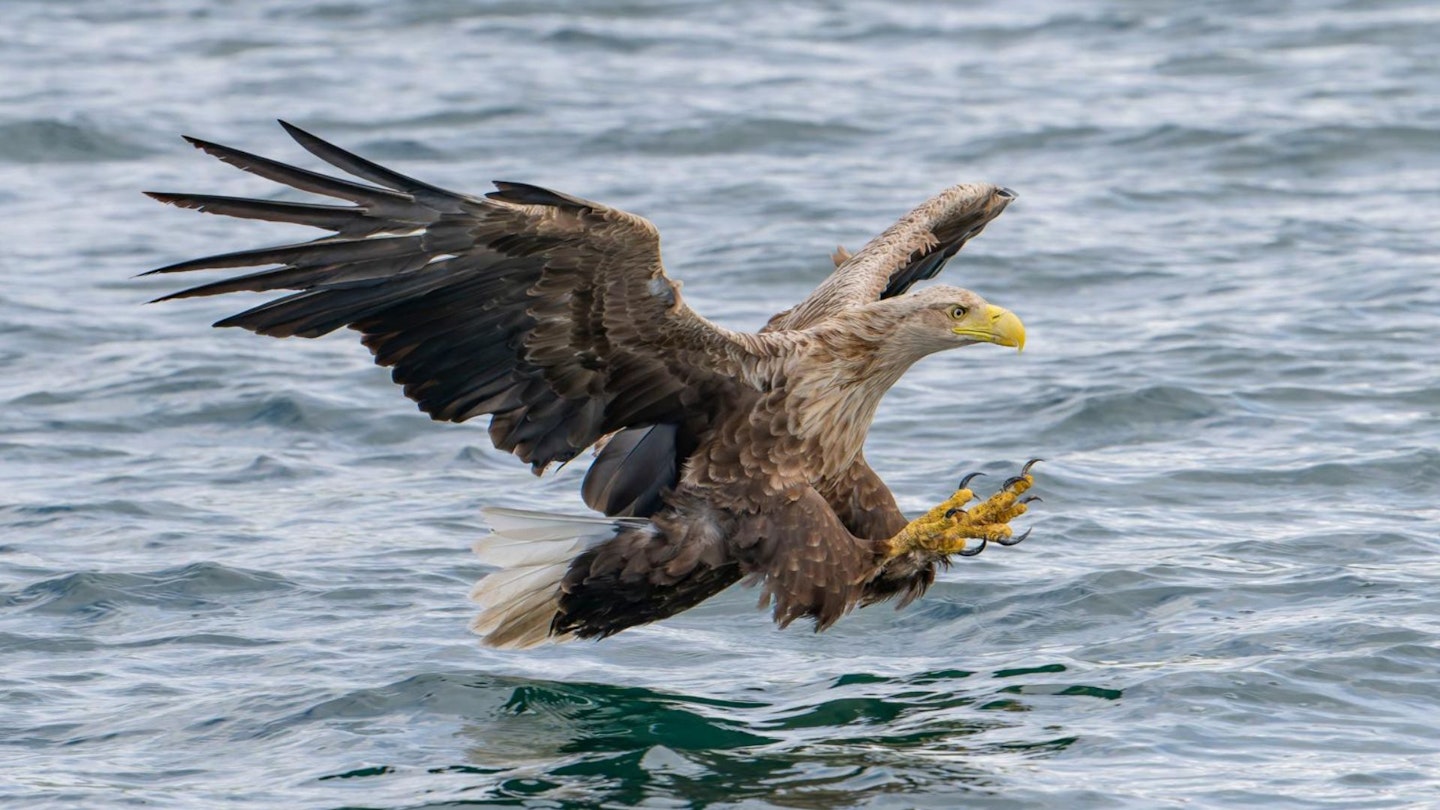
Yet when one study set out to record what white-tailed eagles in England were eating and how they got it, in 5000 hours of observation not a single livestock kill was seen.
“People are just amazed,” says Roy, who now works on the reintroduction project on the Isle of Wight. “They see something that they never thought they’d see in the south of England.
“I met one guy who belonged to a hang-gliding club. He said he was out one day when there wasn’t much lift. There weren’t any thermals. And he said, ‘I turned around, and this monster bird was bearing down on me and passed very close. And I followed it into a thermal, up to 2000ft.’”
This year, the oldest sea eagle in the UK, Frisa, died. She was born to Blondie, the first sea eagle to breed in Scotland, and over the course of her 32 years raised 25 chicks with her lifelong partner, Skye. From one small volcanic island in the Hebrides, an entire species has been restored.
“It’s important, I think, to have these success stories,” says Roy. “It gives people a feeling that, despite the dire state that biodiversity is in in the world, there are people who can help turn it around.”
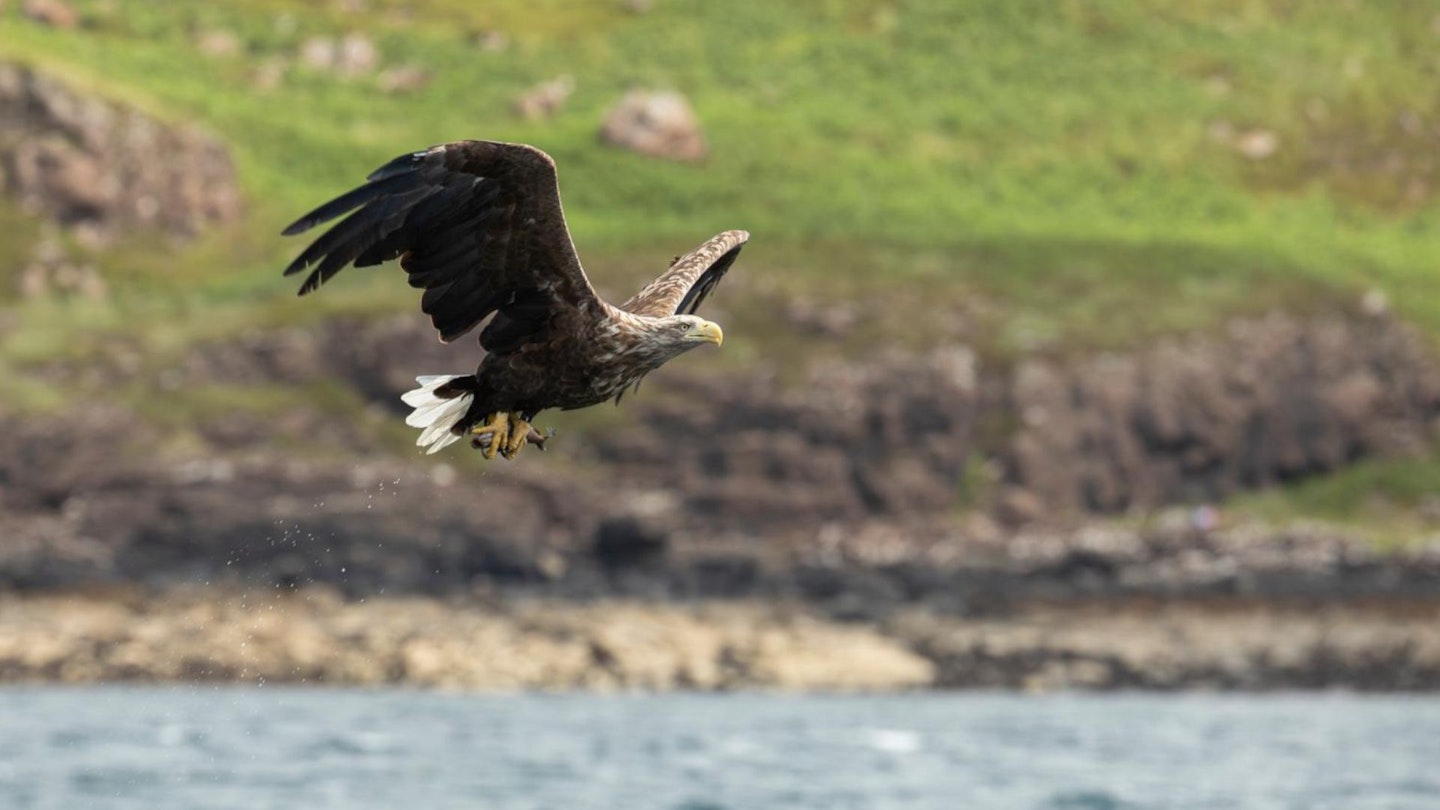
How a species was wiped out
In the early 1800s, Rum’s population was at its peak, home to around 440 people growing potatoes and barley, crofting and harvesting kelp. These were tenant farmers, who did not have the option to own either their houses or the land they worked but were required to pay rent to the laird.
In 1826, in financial difficulties himself, the laird decided to lease the whole island to one sheep farmer. Over the next two years, all but one family were evicted and sent to Nova Scotia. They were replaced by 8000 sheep.
These evictions, the Highland Clearances, were taking place all over Scotland and just as communities were moved to make way for the lucrative sheep, so were the sea eagles culled. Any that survived persecution had Victorian egg collectors and trophy hunters to contend with. In 1918, the last documented sea eagle was shot and killed over Shetland.
How to spot the difference between a white-tailed and golden eagle
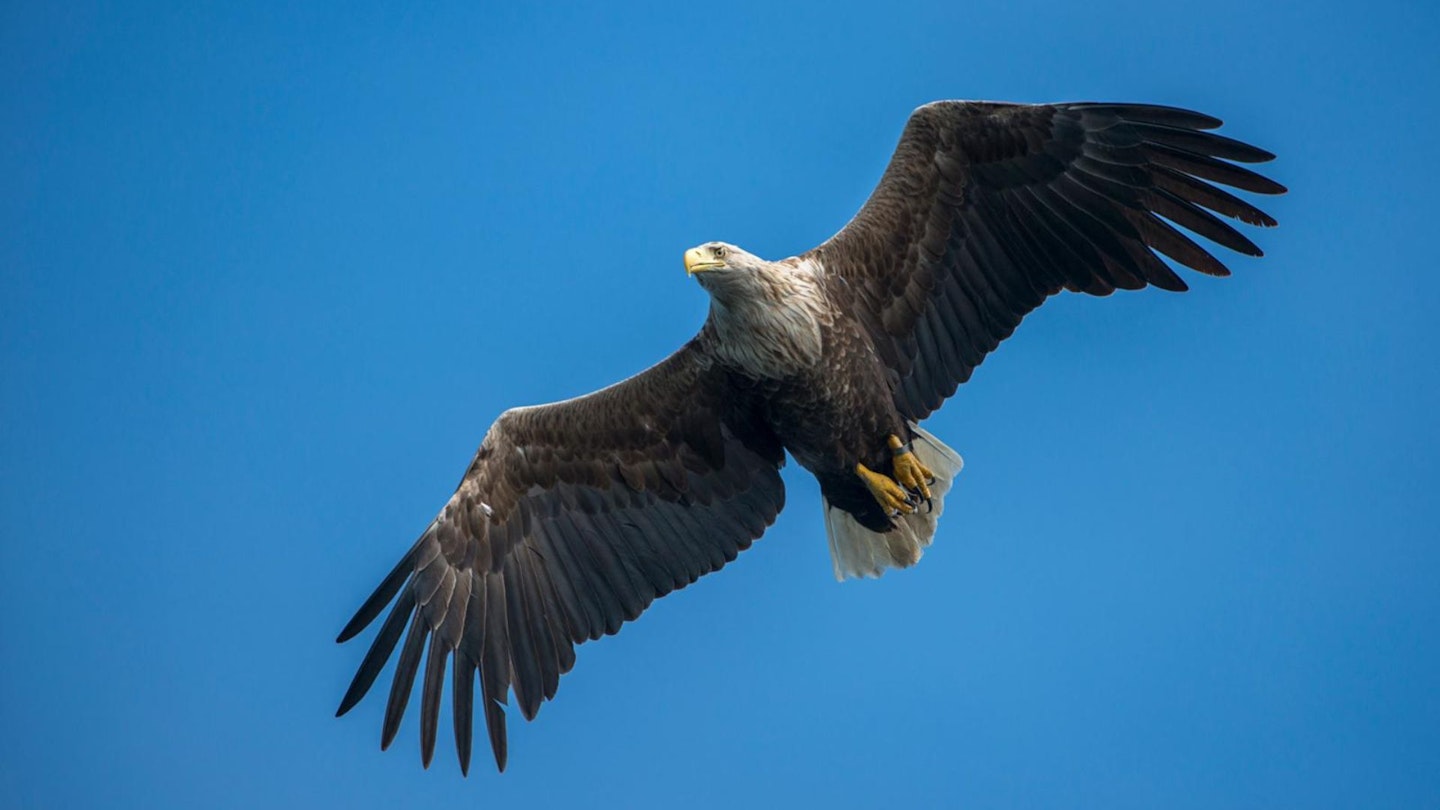
White-tailed eagle
LATIN NAME: Haliaeetus albicilla
BILL: Bright yellow and chunky
FEET: Marigold yellow with black talons
CHARACTERISTICS: A wide, fanned tail, bright white from underneath and huge, broad plank-shaped wings
SIZE: 200-250cm wingspan, 3.5-7kg
FLYING HABITS: Often seen soaring in coastal areas of Scotland or perching on crags and trees
Golden eagle
LATIN NAME: Aquila chrysaetos
BILL: Black to grey, yellow near the face
FEET: Muted yellow with black talons
CHARACTERISTICS: Mostly brown with golden brown plumage around the neck and chest
WINGSPAN: 204-220cm
WEIGHT: 3.7-5.3kg
FLYING HABITS: Often seen soaring on the thermals through remote Scottish glens, occasionally adding power with deep, slow wingbeats
Now watch the movie
Watch the trailer for Return, a new RSPB film celebrating one of the greatest comebacks in UK nature, seen through the eyes of those who made it happen.
Find out how a group of dedicated conservationists brought the white-tailed eagle back – and meet the next generation of nature lovers taking this story into the future. Launching summer 2025.
